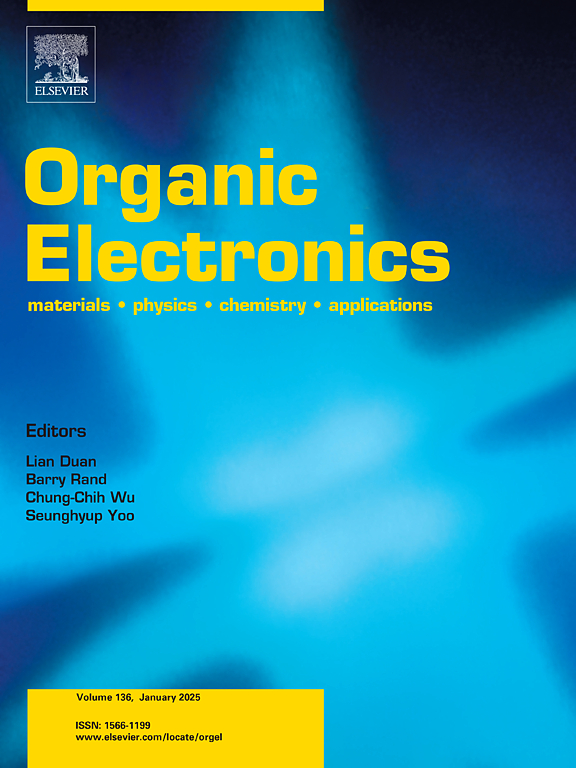Overcoming light loss in semi-transparent ternary organic solar cells with ultra-thin metal electrodes
IF 2.7
4区 工程技术
Q3 MATERIALS SCIENCE, MULTIDISCIPLINARY
引用次数: 0
Abstract
Organic photovoltaics (OPVs) hold promise as renewable energy sources with diverse optoelectronic applications. Research focusing on semi-transparent OPVs has gained prominence in the field of energy conversion. In this study, we investigated semi-transparent OPVs utilizing PC71BM and PC61BM as third-component materials. The addition of PC71BM improved the open-circuit voltage (VOC) and fill factor (FF) of the devices. As a result, we selected the PM6/Y6:PC71BM ternary active layer and designed two distinct semi-transparent device structures. By adopting a sequential deposition approach (pseudo-bilayer), we achieved independent control over the PM6 layer thickness, enhancing visible transmittance performance. Compared to traditional bulk heterojunction (BHJ) structures, our design exhibited superior transparency, achieving an 11.66 % power conversion efficiency (PCE) and 24.95 % maximum average visible transmittance (AVT) under optimal conditions. It is noted that our devices demonstrated exceptional photon utilization efficiency up to 2.90 %. This study significantly advances the optimization of semi-transparent OSC performance and offers new insights for developing more efficient and transparent optoelectronic devices in the future.

利用超薄金属电极克服半透明三元有机太阳能电池的光损耗
有机光伏(OPVs)是一种具有多种光电应用前景的可再生能源。在能量转换领域,对半透明opv的研究日益突出。在本研究中,我们研究了以PC71BM和PC61BM作为第三组分材料的半透明opv。PC71BM的加入提高了器件的开路电压(VOC)和填充因子(FF)。因此,我们选择PM6/Y6:PC71BM三元有源层,设计了两种不同的半透明器件结构。通过采用顺序沉积方法(伪双层),我们实现了对PM6层厚度的独立控制,提高了可见光透过率性能。与传统的体异质结(BHJ)结构相比,我们的设计具有更好的透明度,在最佳条件下实现了11.66%的功率转换效率(PCE)和24.95%的最大平均可见光透过率(AVT)。我们的器件表现出优异的光子利用效率,高达2.90%。该研究显著推进了半透明OSC性能的优化,为未来开发更高效、透明的光电器件提供了新的见解。
本文章由计算机程序翻译,如有差异,请以英文原文为准。
求助全文
约1分钟内获得全文
求助全文
来源期刊

Organic Electronics
工程技术-材料科学:综合
CiteScore
6.60
自引率
6.20%
发文量
238
审稿时长
44 days
期刊介绍:
Organic Electronics is a journal whose primary interdisciplinary focus is on materials and phenomena related to organic devices such as light emitting diodes, thin film transistors, photovoltaic cells, sensors, memories, etc.
Papers suitable for publication in this journal cover such topics as photoconductive and electronic properties of organic materials, thin film structures and characterization in the context of organic devices, charge and exciton transport, organic electronic and optoelectronic devices.
 求助内容:
求助内容: 应助结果提醒方式:
应助结果提醒方式:


